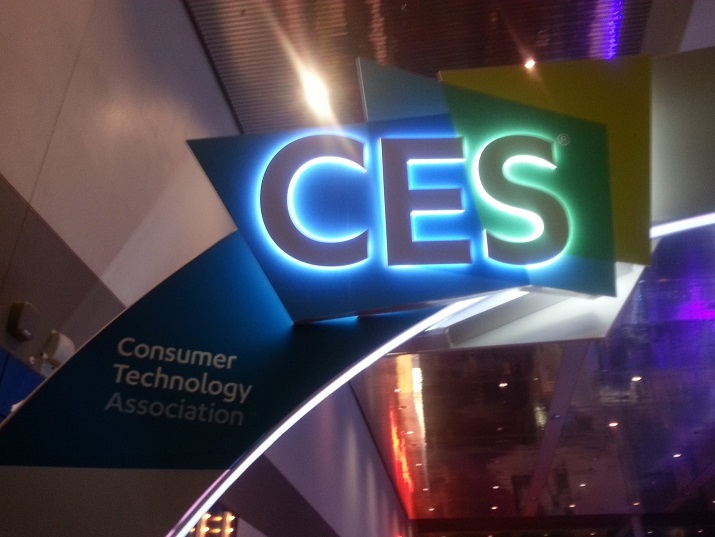
That annual sensory overload that is the Consumer Electronics Show in Las Vegas has just come to an end, and EP has returned to its home office in Garden City, NY, but not without its bag of goodies. This year’s event commemorates the event’s 50th anniversary, showcasing everything from transparent televisions to televisions as thin as a stack of three credit cards; from household appliances controlled by your voice to hub robots that synchronize all IoT items in your smart hub. There were laptops with three built-in monitors and 21-inch laptops that cost $9,000.
Despite how science-fiction-esque these concepts may seem in comparison to what debuted at the inaugural CES in 1967, 2017 was more like a year of incremental improvements and chest-pounding optimism over what’s to come.
Panasonic transparent TV

Panasonic’s transparent OLED looked just as amazing in person as it did in Japan’s CEATEC Electronics Expo when it first debuted back in October 2016. In fact, the entire display was rebuilt at CES.
Sony Xperia

Going by the motto “turn anything into a touchscreen,” Sony’s Xperia projector links with your smartphone and beams a touchscreen onto any surface. Why? Why not? The Android-powered device could be used to enlarge Google Maps, video chat, control certain IoT devices, and display clocks on your wall. Although not in its final form, the device will be small enough to carry on the go or keep stationary at home.
DJI Mavic Pro

In 2017, drone prices continue to plummet while quality continues to improve. Driven by competition from low-cost Chinese drone manufacturers, DJI and other US-based drone makers are delivering higher-quality goods and lower costs of entry. The DJI Mavic Pro quadcopter is truly one of the best drones that money can buy at $999, offering a 4K camera, four-mile range, speeds of up to 45 mph, solid construction, and a foldable frame that fits in the palm of your hand. Did I mention that Mavic is also newbie-friendly? It features obstacle-avoidance tech and visual tracking that will follow a subject with a touch of the smartphone.
Bridge VR
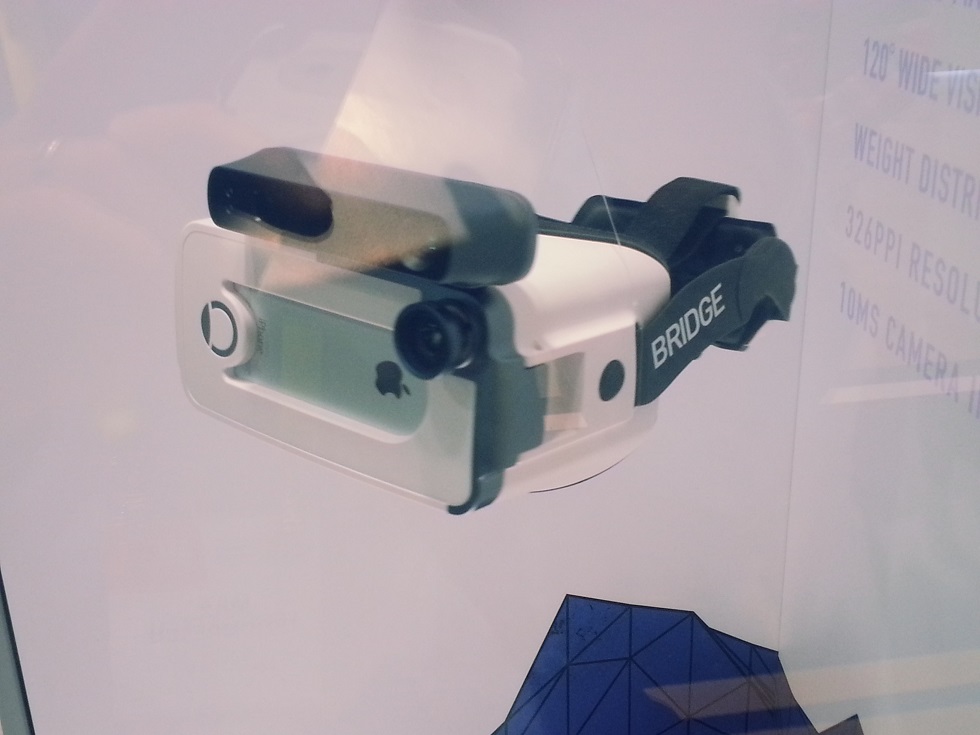
Most of the head-mounted displays (HMD) presented at CES 2017 took the form of the mobile HMDs like Google Cardboard and Samsung Gear; there were no new premium tethered devices like the Oculus Rift or HTC Vive. Considering that upcoming SoCs like the Snapdragon 835 are designed with VR in mind and that 2.32 billion people are expected to own smartphones by 2017, designing an HMD that’s powered by a mobile device makes far more sense than designing a tethered device from the ground up that’s aimed at a far more restricted audience. Of the mobile HMDs, the Occipital Bridge headset is among the most premium, being the sole headset to offer positional-tracking capabilities like high-end tethered HMDs. The Bridge also features the Structure Sensor, an iPad/iPhone-only add-on built by the same company, which uses infrared to scan objects and gauge distances automatically to create depth maps of objects up to 11 feet away.
IMR MACH-2K
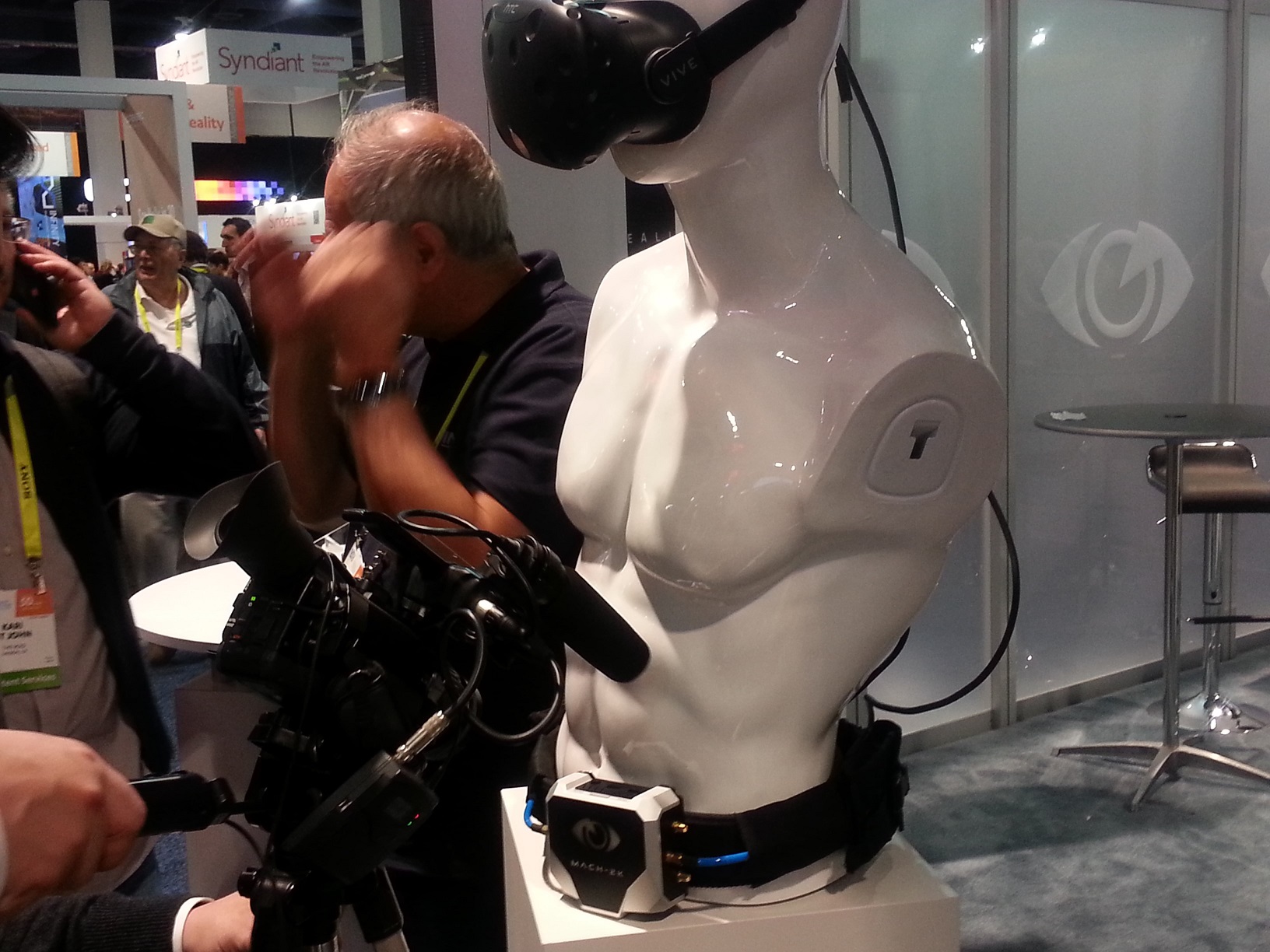
Brisbane-based Australian start-up IMR came to CES with promises of wireless VR. “We approached the problem of wireless by creating our own compression standard for VR,” said CEO & co-founder Daniel Fitzgerald. “It’s the world’s first compression standard with less-than-1-ms latency and no visible image degradation.” The solution is an algorithm that shrinks the data transmitted to and from the headset small enough as to be able to transmit it wirelessly over 802.11ac Wi-Fi (5-GHz) and the latest 802.11ad WiGig (60-GHz) standards. Having tested it myself, I couldn’t spot a difference between the uncompressed tethered VR and compressed wireless variant.
IMR hopes to license their solution to OEMs eventually. But in the meantime, it sells algorithms in an external add-on called the MACH-2K, which functions as a plug-and-play accessory for the HTC Vive. The device contains an FPGA responsible for running full compression on one end and decompression on the other, yet remains small enough to be worn on a belt at the user’s back.
Kopin’s 2K x 2K OLED Microdisplays
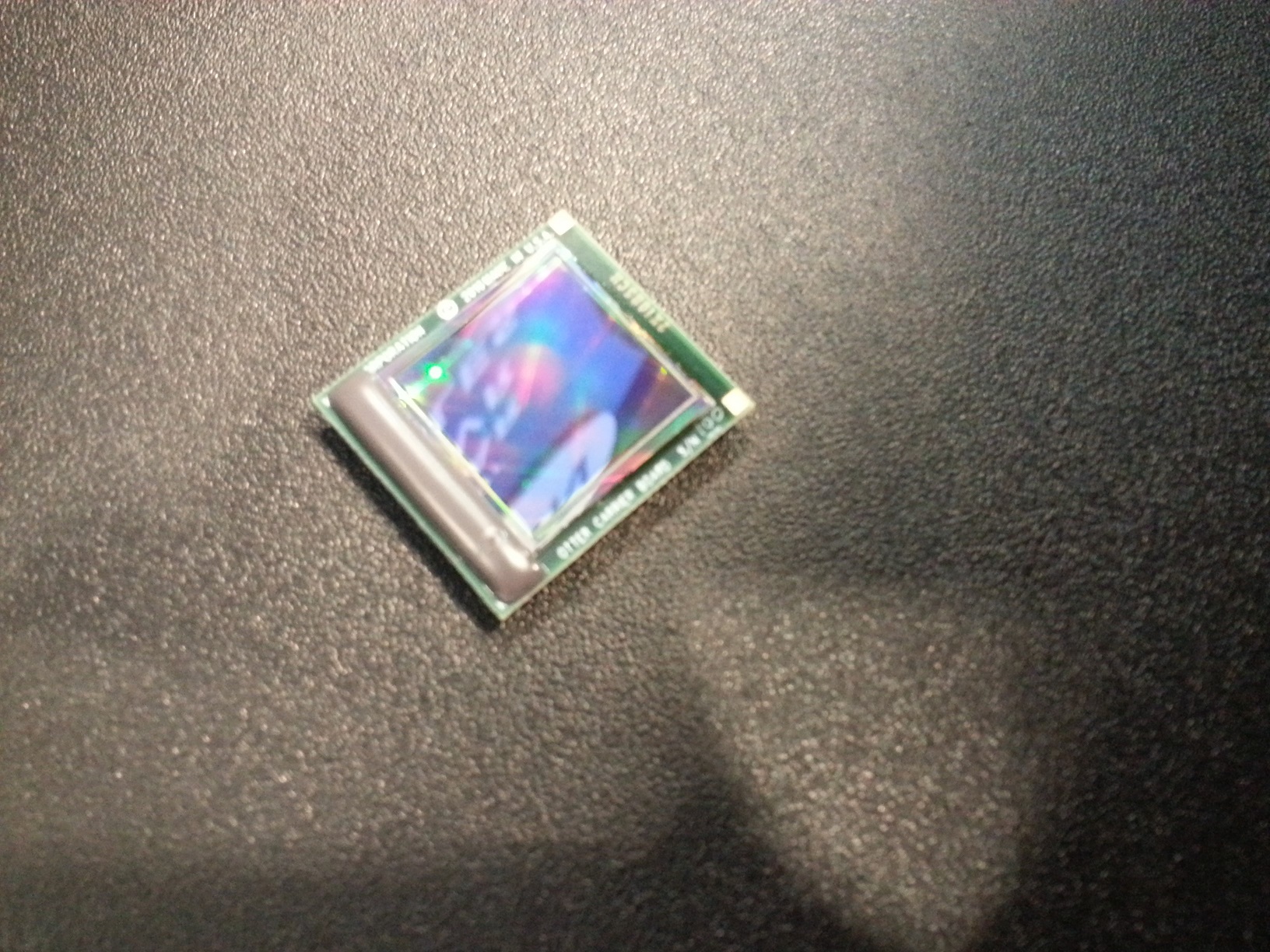
After the novelty of VR wears off, one can’t help but balk at “screen-door effect” caused by the low-resolution display. Kopin , a spinoff from MIT’s Lincoln Labs with 30 years of experience designing microdisplays or military, consumer, and industry products, showcased the one item that I’d say was truly innovative as far as VR is concerned — a micro OLED display with 2048 x 2048 resolution, 120 Hz, and low power consumption.
Officially dubbed the Lightning OLED microdisplay, the device packs 4 million pixels within a miniature display measuring only one inch in diagonal length. As a result, it requires greater optic magnification than what’s present in the Oculus Rift and Vive but features a significantly higher-quality display. For reference, the Oculus Rift and HTC Vive both run 2160 x 1200 resolution at 90 Hz whereas the Lightning display runs at 2K by 2K resolution per eye. Doubling the resolution ultimately removes the screen-door effect, but the added 30 Hz is what shines, smoothing the VR experience to the point of virtually eliminating the motion sickness caused by the slow rendering.
If you’re like me and held off on investing in VR because of the low-quality displays, then Kopin’s Lightning is a sign of good things to come.
Razer Valerie
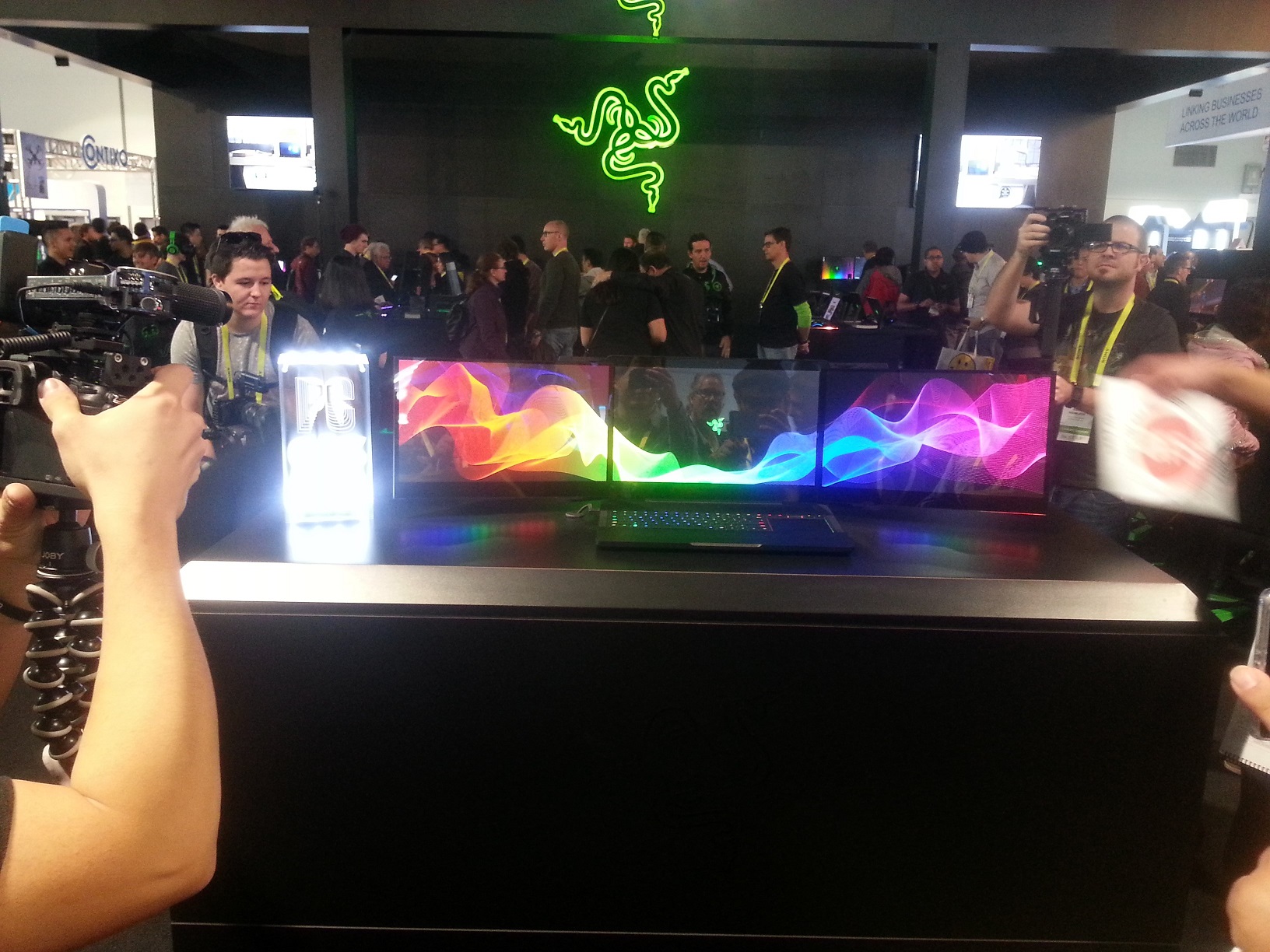
An opulent mess of a laptop, Razer’s Project Valeria features three 17-inch screens on a single laptop. The two side panels slide from behind the main display to create seemingly portable gaming.
Intel, “Live 5G immersive sports” exhibit

Those who had the opportunity to test live VR streaming at CES 2016 can attest to how much of a blurry mess it was. With the ability to offer direct windows in people’s lives in 360°, VR stands to revolutionize the way we consume content if it manages to create a realistic experience. So far, it’s failed in that regard, either because of low-resolution streaming or low-resolution computer graphics. Intel made progress this year on the VR-streaming front when it streamed footage from a 360° camera placed near a basketball hoop to a VR headset about 30 feet away. Donning the headset granted a dynamic view of those playing basketball, allowing me to turn my head in any direction and remotely see the game as if I was there.
Samsung QLED
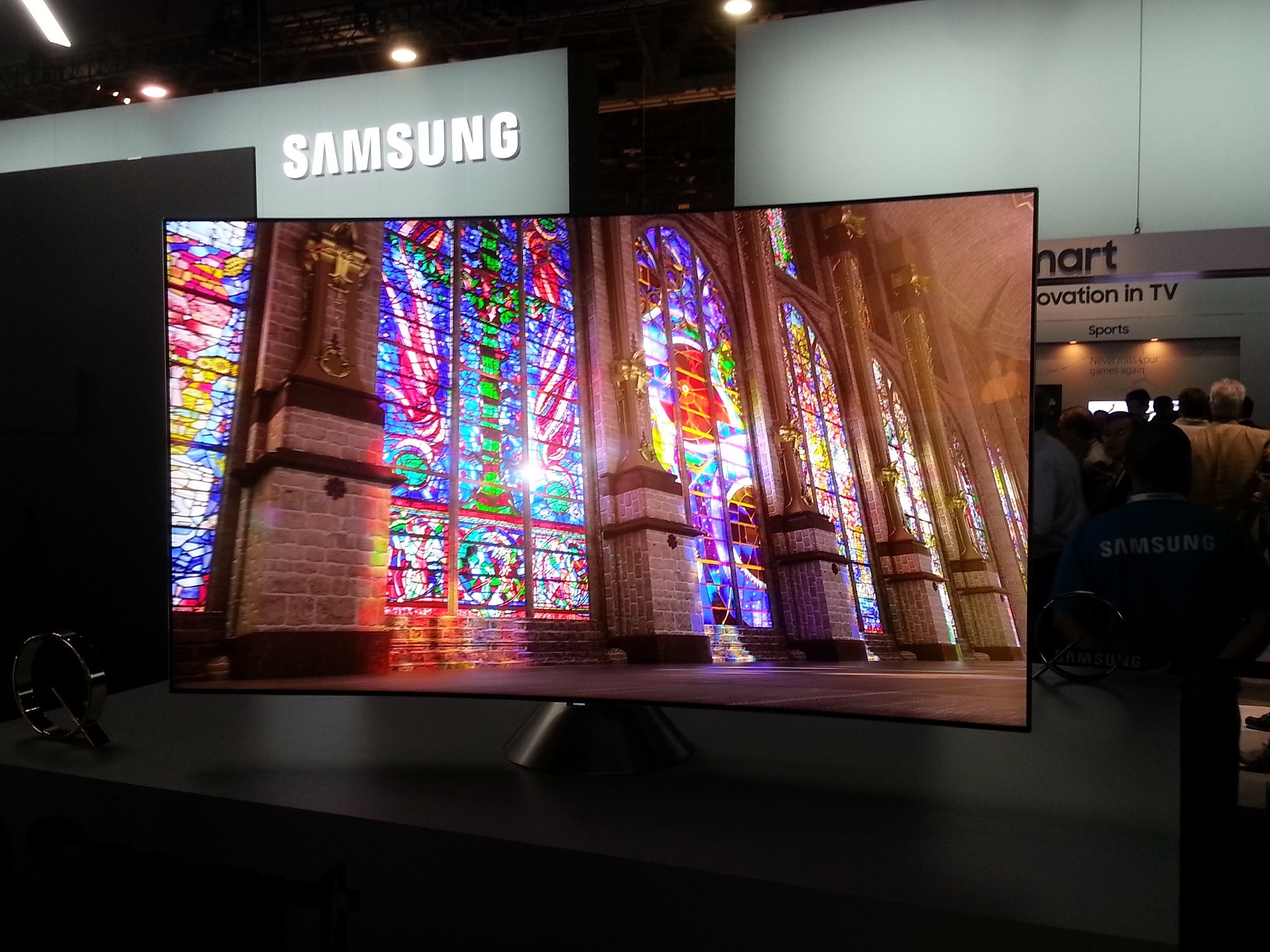
Samsung replaced its SUHD signature line with the QLED , an improved version of last year’s quantum dot panel that uses a new metal alloy to generate 100% of the DCI color gamut and increased brightness. The main standout here is Samsung’s approach to dealing with cable clutter. Rather than plugging set-top boxes, Blu-ray players, and game consoles directly into the TV, users link them to a separate box beneath the television, which then drives power, audio, and visual to the TV itself using a single thin cable called the “Invisible Connection Cable.”
LG Hub Robot
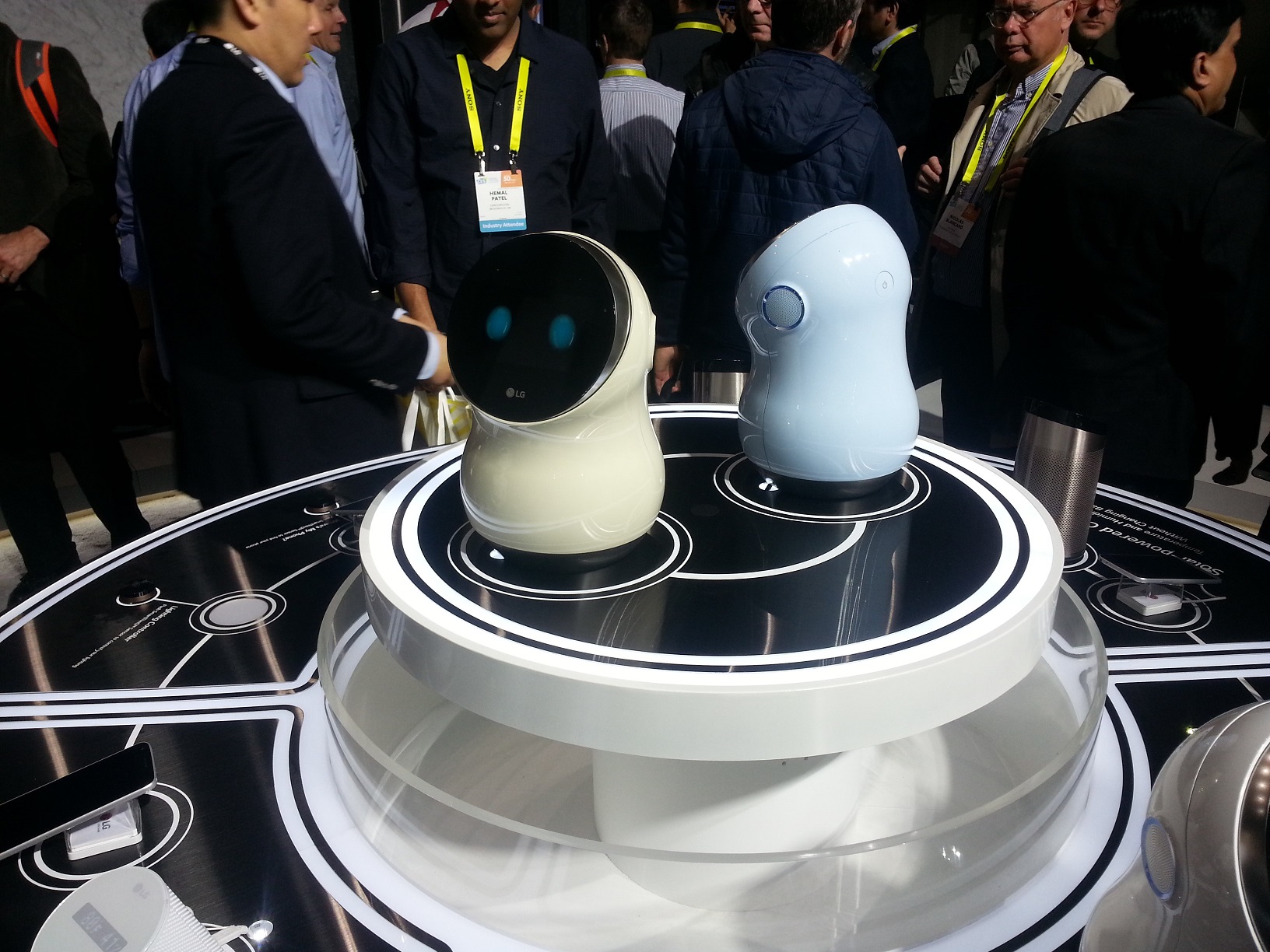
LG’s hub bot represents IoT maturation. The newly announced gadget is one of the many robot companions announced at CES, but it’s the only one that serves as a link between all of your LG smart-home appliances. Hub Robot connects your smart oven, robot vacuum cleaner, smart washing machine, and smart refrigerator under one platform, using Amazon’s voice assistant, Alexa, to process your verbal commands. One the most noticeable trends this CES 2017 was the IoT’s transition from app-based control to verbal commands.
Qualcomm screwing up Drone exhibition
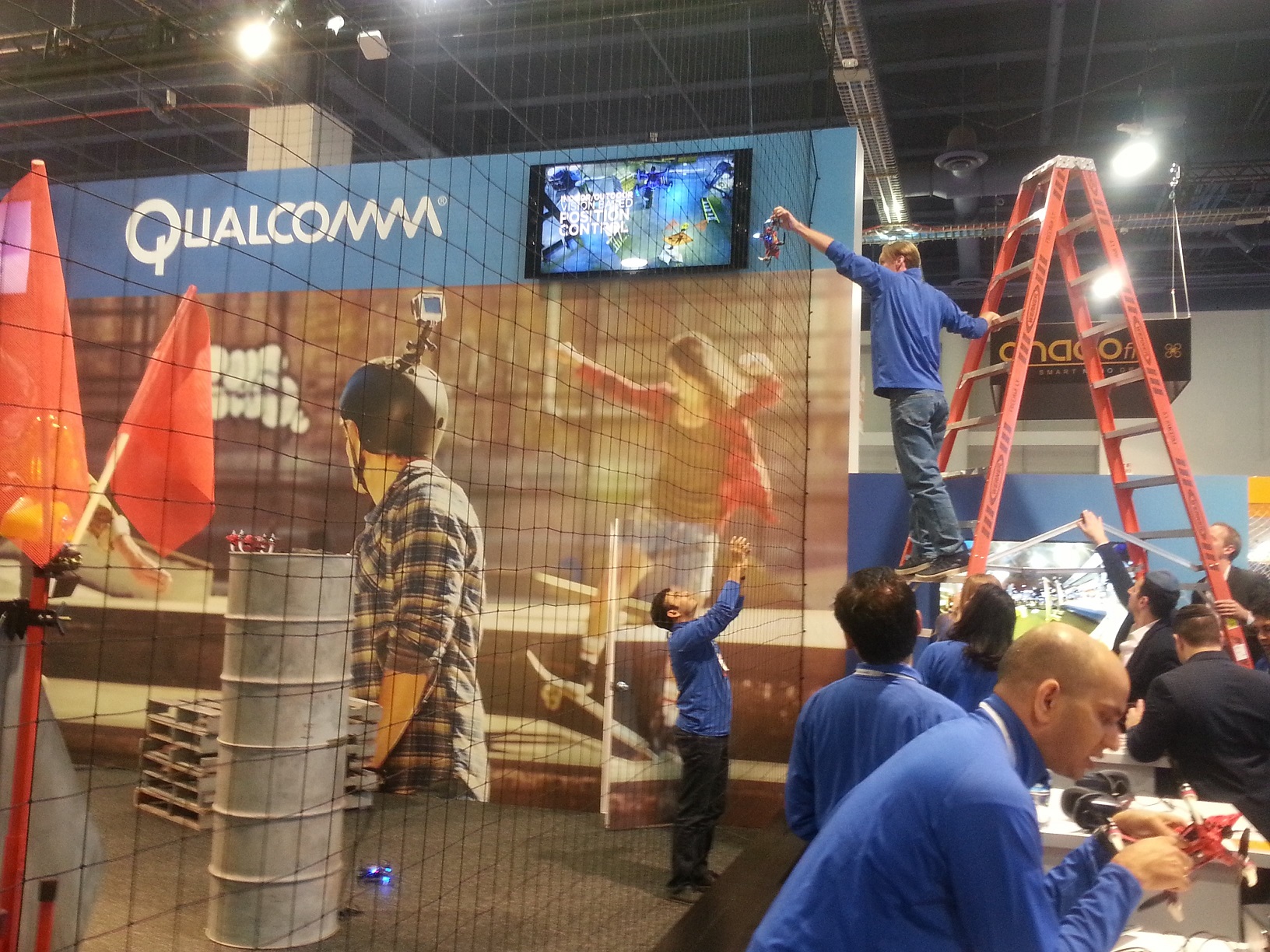
Qualcomm’s Snapdragon Flight Drone Development uses image-processing to help drones navigate environments in the absence of GPS. To demonstrate this in action, it set up a booth at CES, complete with a drone net, and flew around. At one point, a pilot failed to properly steer his drone, crashing it into the safety net. Amusing.
Going back to the main point, the Snapdragon onboard navigation processor only weighs 12 grams, which is less than an AAA battery.
Novek
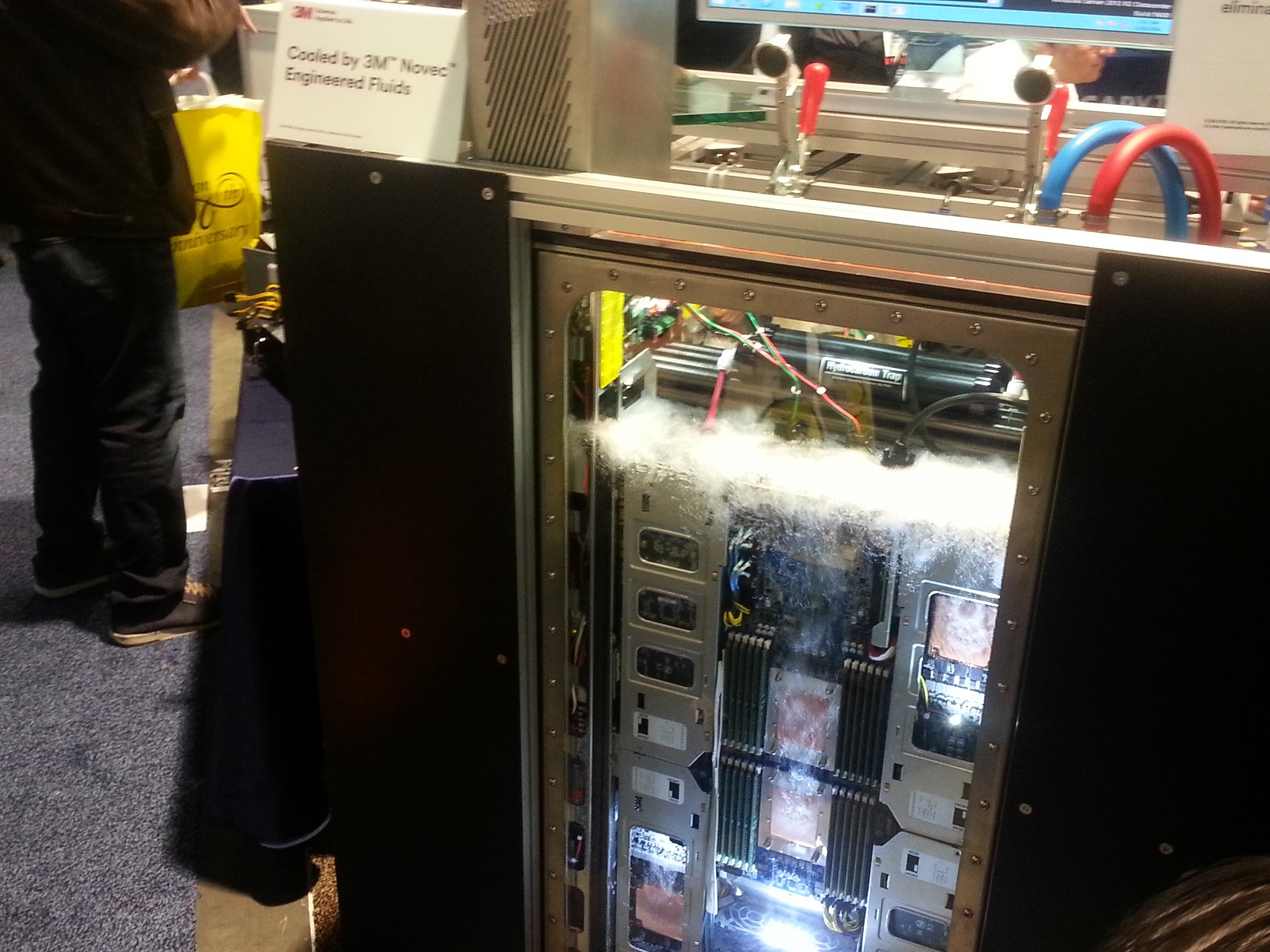
When I first spotted 3M’s Novek solution, I had to quickly re-assess my sense of reality to make sure that what I was looking at was a functional computer completely submerged beneath a fluid. We covered Novek in greater detail here , but the fluid is essentially a non-electrically conductive thermal cooling compound that sucks up heat from the CPU and GPU and transfers it to a condenser. It’s liquid cooling taken to the next level.
Samsung quantum dot curved gaming monitor
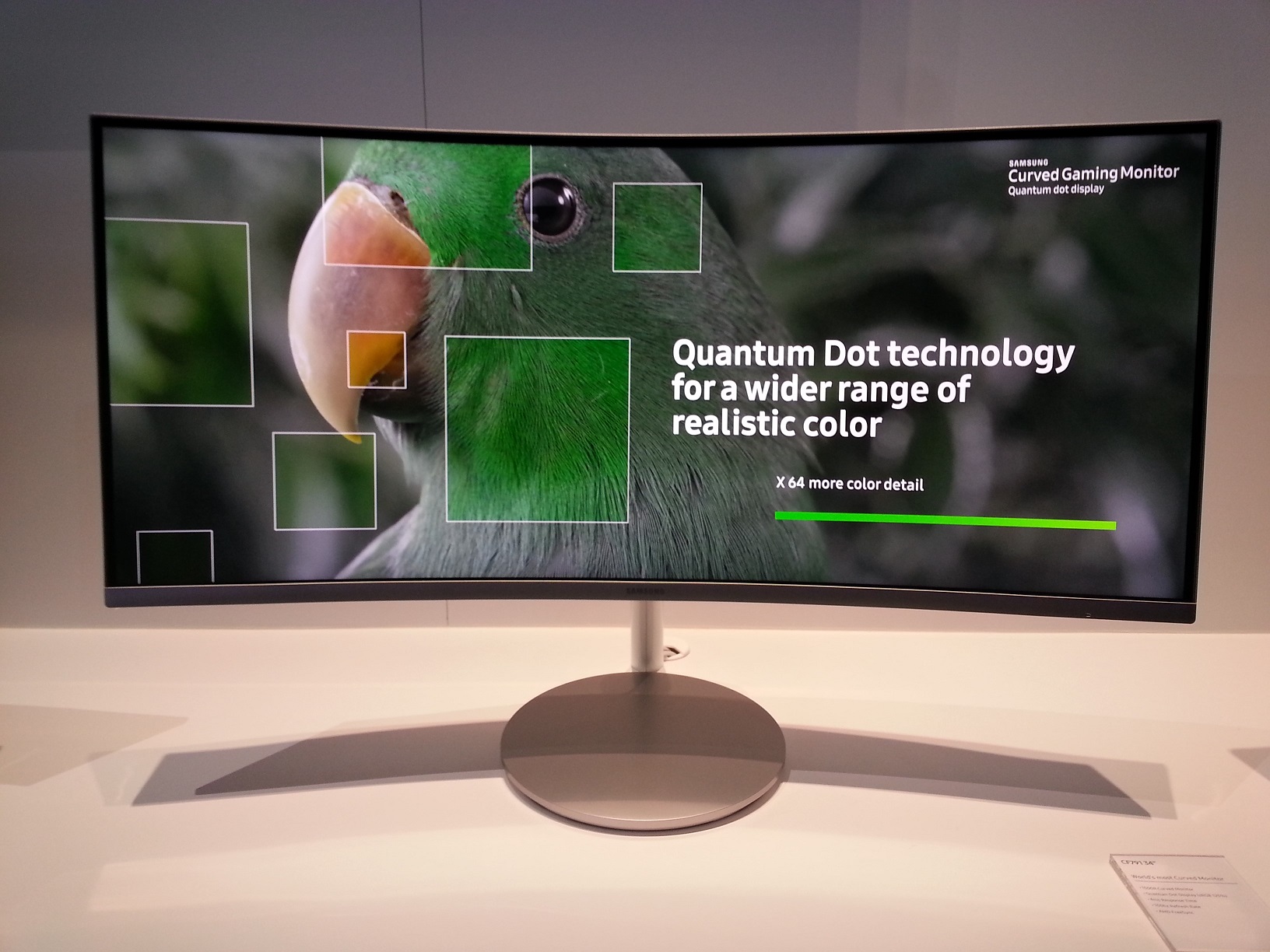
The world’s first quantum dot monitor. Enough said. Ultrawide definition for enhanced field of view.
LG Airport Robot
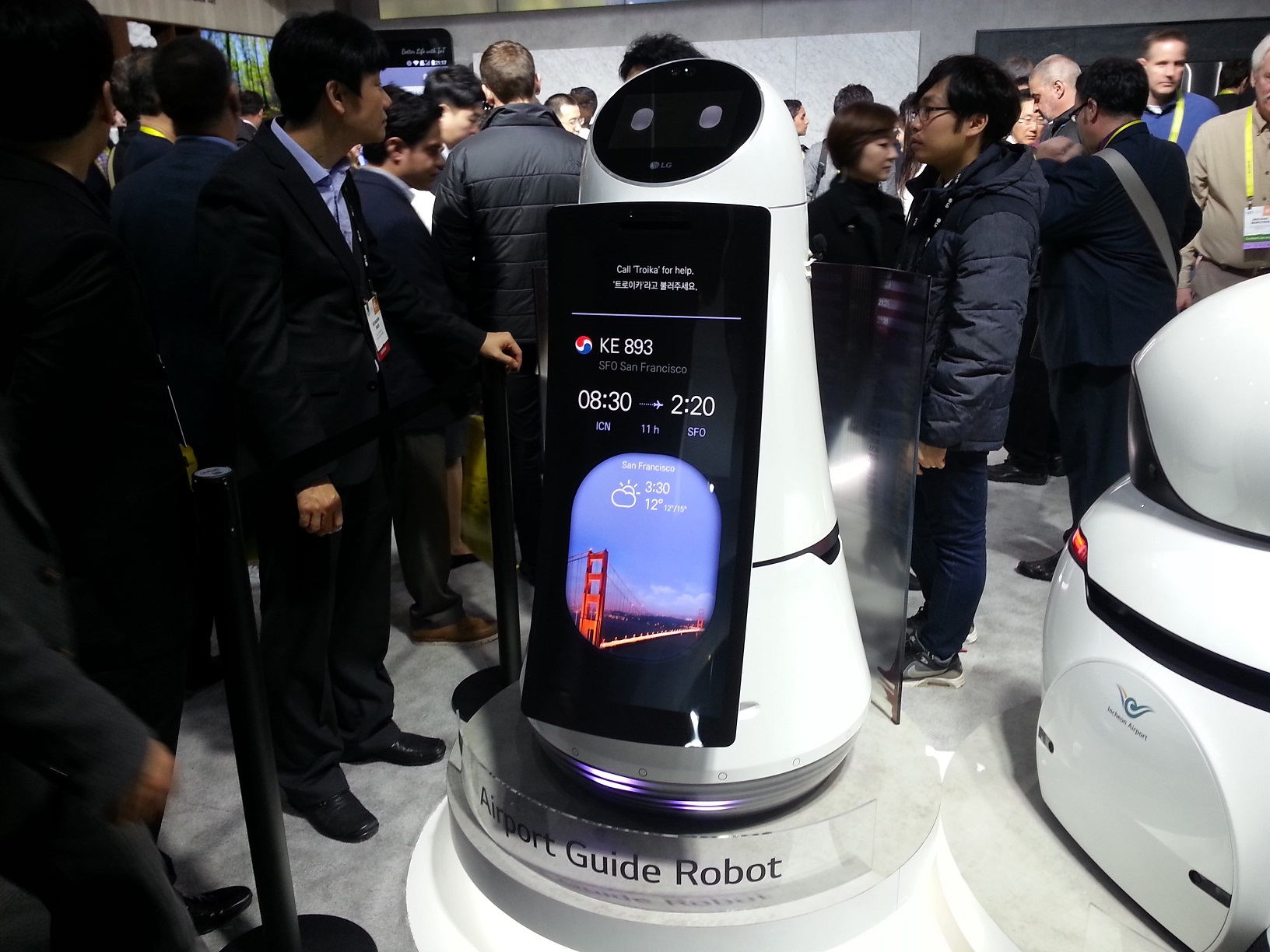
Resembling an up-scaled version of the Hub Robot, you most likely won’t see LG’s Airport Guide Robot anywhere but in the Seoul airport, but it’s a fun proof-of-concept that exemplifies futuristic design. The idea is that Guide Robot will help navigate the twisted confines of airport terminals, leading you to your proper terminal. Just scan your boarding pass and follow the robot. Also present was an airport-cleaning robot, which is useful.
LG OLED W

LG’s OLED W7 television — otherwise known as my darling of CES — is a 2.57-mm-wide ultrathin panel that can’t stand on its own and shares more in common with a framed painting than television. Together with its magnetic wall-mounts, it protrudes just 3.85 mm and weighs 18 pounds for the 65-inch or 27 pounds for the 77-inch. The 4K display covers a 99% DCI color gamut and improves its peak brightness by 25% over last year’s model. With this year’s model, HDR support includes last year’s Dolby Vision and HDR10, as well as HLG and Technicolor. And like Samsung’s WLED, the W7 opts to drive audio, video, and power using a single cable that connects to a speaker bar.
Bonus: LG OLED W TV Tunnel

Last year’s tunnel-of-television returned to the LG booth — this time slathered entirely in W7 panels.
Advertisement
Learn more about Electronic Products Magazine





